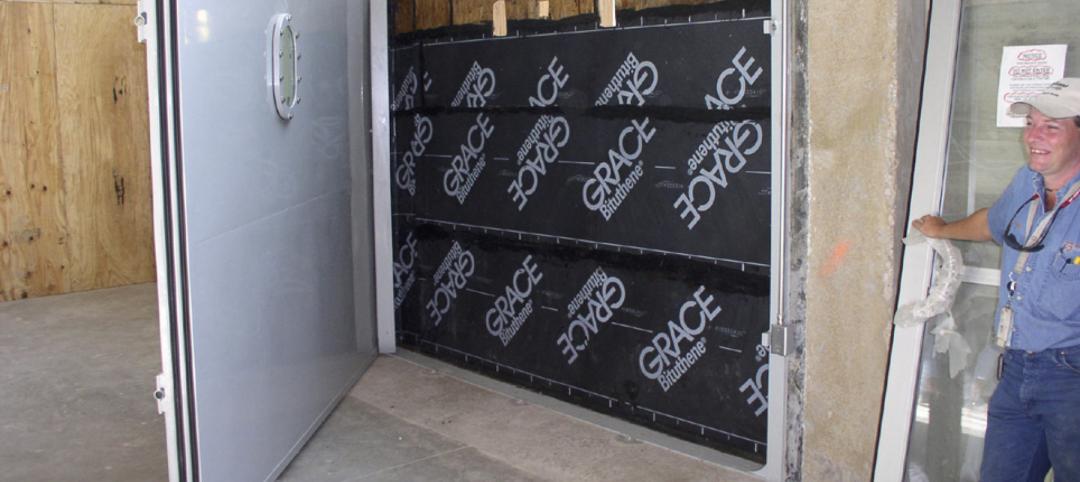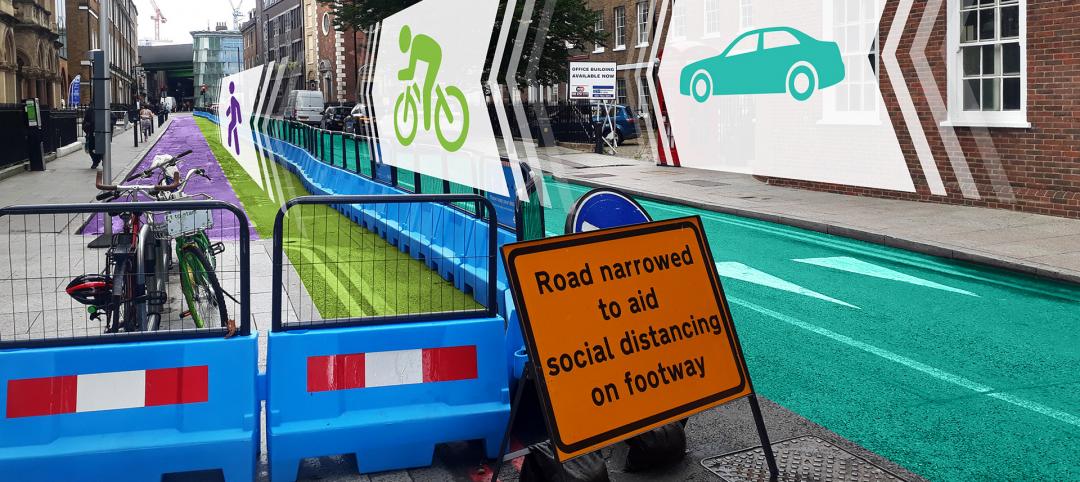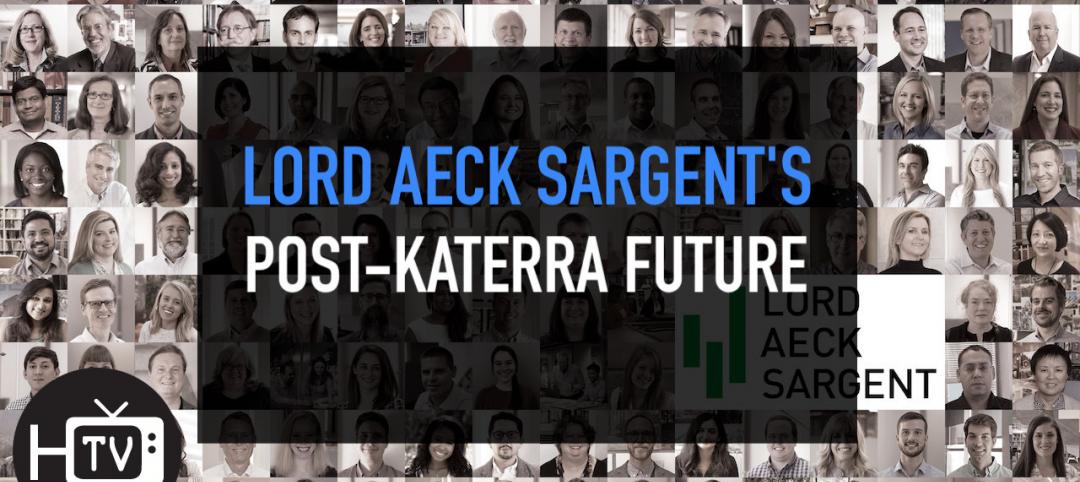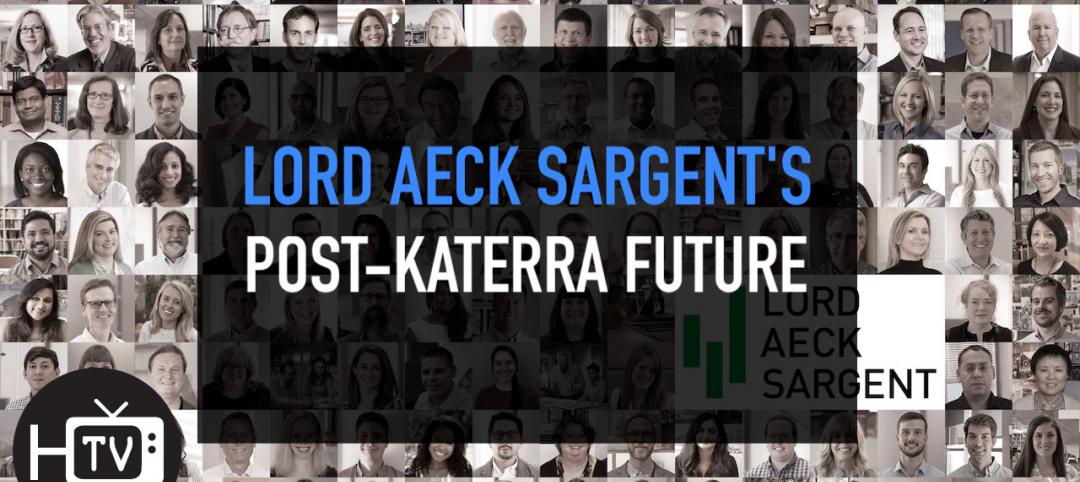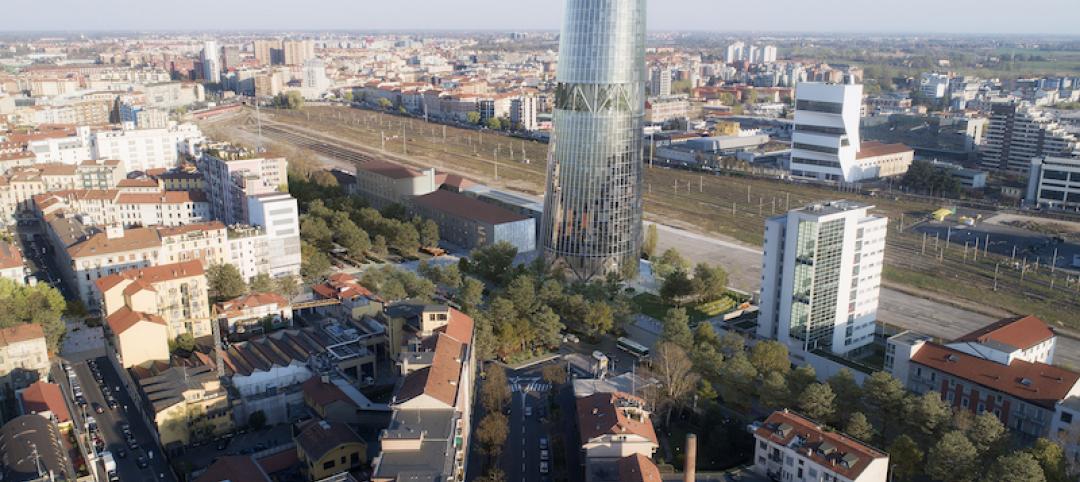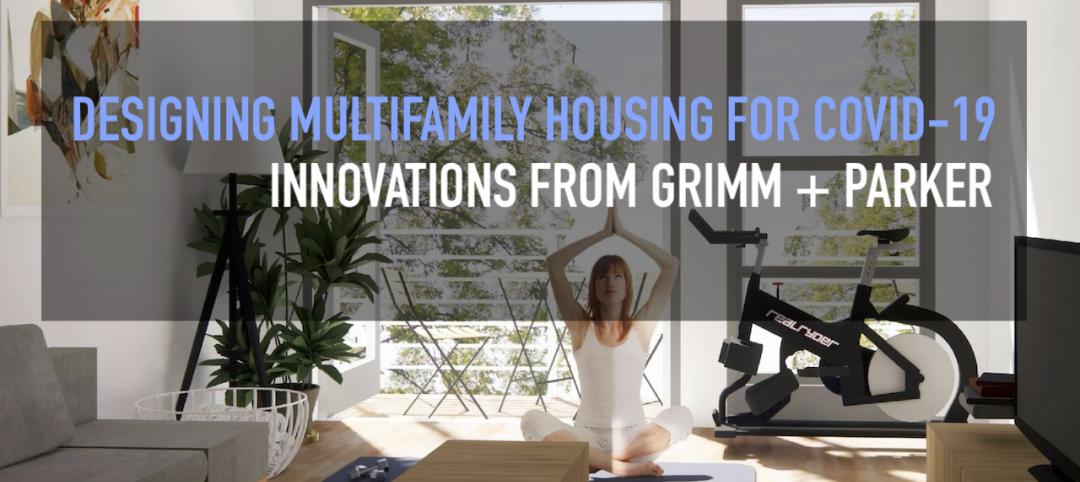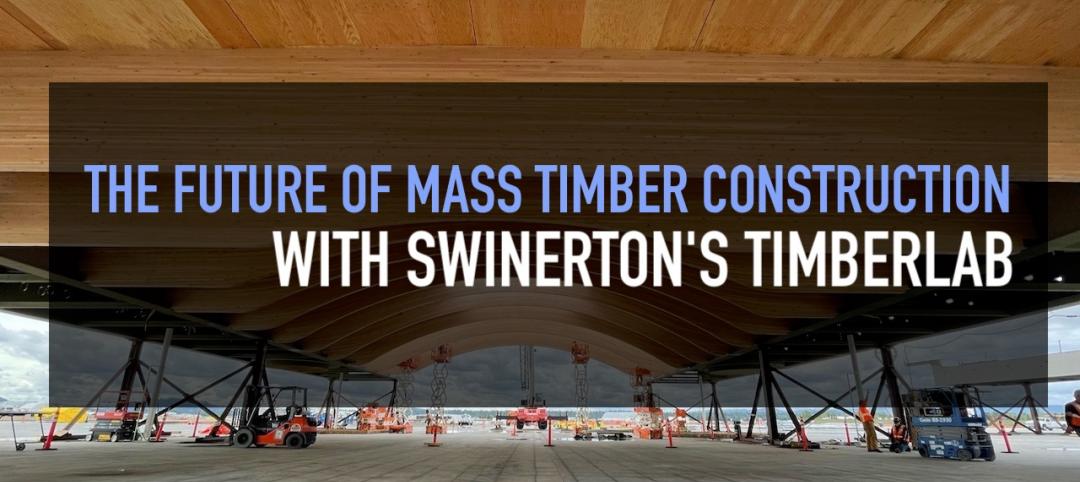Windows not only transform the façade of a building, the natural light that they allow inside is a vital tool in highlighting a building’s interior design elements.
But sunlight is not always needed—or even wanted. At some point in the day, direct sunlight will enter the space, causing glare and heat gain.
Enter the interior shade system.
“The primary purpose of a shade system is to control glare for the user’s visual comfort,” says Kristopher Baker, PE, LEED AP, Senior Associate in the Denver office of Syska Hennessy Group. These systems also help eliminate excess heat caused by direct sunlight.
Designing a shade system is more complex than picking out basic white venetian blinds. The Building Team’s overall design and functional goals should be considered, as well as the end user’s needs. Here are five elements to consider when designing an interior shade system.
1. Make sure the type of shade system meets client needs and program goals.
The type of device should be chosen based on the client’s needs and the overall programmatic goals of the project. Different types of shades have different benefits, according to Baker.
• Honeycomb shades feature two to three layers that trap air inside, acting as insulation and allowing users to reduce heat loss through the windows.
• Venetian blinds are available in various sizes with slats that can be tilted at different angles to control the amount and direction of sunlight that is allowed into a space.
• Roller shades are panels of fabric with varying levels of openness in the weave.
Follow these guidelines to get your shade system right
1. Make sure the type of shade system meets client needs and program goals.
2. Fit the shade system to the specific type
of space you’re working in.
3. Check out the new control mechanisms
that are available.
4. Use shades to help meet your project’s
energy goals.
5. Look into the future of shading technology.
Joseph Parks, national sales manager for commercial window treatments at Lutron, says a shade should be chosen primarily for its function, rather than its form. “A lot of times the fabric is chosen based on the look or the aesthetic or how it matches the interior, rather than how transparent the fabric is with regard to light,” he says.
2. Fit the shade system to the specific type of space you’re working in.
Baker highlights the importance of understanding the space and what it will be used for when designing a shade system. Shades are used to control glare in a specific environment, but not all spaces need shades. For example, an airport terminal is one location where shading devices are not necessarily desirable.
“Having direct sun and having that brightness helps you with your circadian rhythms, and that’s what helps you get over jet lag,” Baker says. “That’s why most of the new airports have a lot of daylight coming into the space.”
However, for an eye clinic, where patients are moving throughout the facility with their pupils dilated, a shade system would be ideal for reducing the amount of direct sunlight penetrating the space.
High-traffic areas such as atriums and lobbies require a more varied approach in shade design, with a number of options for glare control.
The library of Calvert High School in Prince Frederick, Md., is one such location where a shade system was necessary for the productivity and comfort of the occupants. Skylight panels totaling 17,000 sf top the media center, but the possibility of disruptive glare and heat gain posed a challenge. A user-controlled mechanical shade system allows school administrators to control the position of the shades for the comfort of students and staff working below.
3. Check out the new control mechanisms that are available.
The use of automated control systems is on the rise, according to Parks. “There’s certainly a big trend in the solar tracking arena of shades,” he says. “The shades are smart enough to understand where the sun is supposed to be in relation to the building, so they can either manage the daylight or allow more daylight into the space.”
More advanced technology places sensors on the window, allowing for more precise automatic glare control based on the sun’s position.
The Portland, Ore., office of engineering firm Glumac features one such automated system. Solar-adaptive roller shades automatically adjust based on the amount of direct sunlight entering the space.
Manual systems have their merits, but Baker warns that building users can override the shading system. “If you walk around an office park, you’ll see that 80 to 85% of the blinds of every office are closed so that people can’t see out,” he says. “People have no problem getting rid of sun when they’re annoyed by it, but when the sun goes away they don’t open them back up.”
If a manual system is specified, user education is vital to ensure building occupants operate the shading system the way the Building Team and owner intended.
4. Use shades to help meet your project’s energy goals.
Shades can lower a building’s HVAC cooling load by about 10% and can increase the daylight harvesting savings by 30–40%, according to Parks. Care must be taken to determine what the building’s overall energy goals will be and how the shade system will fit into that plan.
At the Glumac office, the solar-controlled shades are accompanied by a lighting system with vacancy and daylight sensors that work together to adjust the amount of natural and artificial light in the space, with an ultimate goal of reducing the building’s dependence on electric lighting.
While shade systems are a part of an effective daylighting strategy, Baker stresses that some form of glare control should be implemented in the design of any building, regardless of its daylighting techniques.
“You can’t allow the direct sun to come in and splash your desk,” he says. “Fundamentally, the glare control has to be part of a solution, whether there’s daylighting or not.”
5. Look into the future of shading technology.
What is innovative right now might be outdated and less efficient than newer technologies in 10 years. An investment in new technology might prove more efficient and effective than relying on what you’ve always used.
“The technologies are going to continue to get smarter,” says Parks. “We’ve gone pretty far in that we can now sense what is going on right outside the window, but you may see systems that can communicate to building management systems and develop a hierarchy of needs based on temperature and light, rather than just light.”
Baker sees that innovation being taken one step further, with the expansion of dynamic glass technology that may eliminate the need for a shade system altogether.
Electrochromic glass uses an electrical pulse to control the tint of the glass; thermochromic glass changes the tint based on the surface’s temperature.
“If the sun is on that glass, then it goes dark; if the sun is not on that glass, it stays clear,” Baker says. “It’s expensive technology right now, but if they get a hold in the marketplace, you will not need interior blinds.”
Related Stories
Resiliency | Aug 19, 2021
White paper outlines cost-effective flood protection approaches for building owners
A new white paper from Walter P Moore offers an in-depth review of the flood protection process and proven approaches.
Urban Planning | Aug 16, 2021
Building with bikes in mind: How cities can capitalize on the pandemic’s ‘bike boom’ to make streets safer for everyone
Since early 2020, Americans have been forced to sequester themselves in their homes with outdoor activities, in most cases, being the sole respite for social distancing. And many of people are going back to the basics with a quintessential outdoor activity: biking. Bike sales absolutely skyrocketed during the pandemic, growing by 69% in 2020.
Senior Living Design | Aug 13, 2021
Designing with dignity for senior living, with Mike Rodebaugh, LEO A DALY
In this exclusive interview for HorizonTV, Mike Rodebaugh, AIA, Senior Living Sector Leader with LEO A DALY, describes how his firm applies "hospitality magic tricks" in its senior living communities, using design to lend dignity to residents, staff, and residents' families and social circles.
Architects | Aug 5, 2021
Lord Aeck Sargent's post-Katerra future, with LAS President Joe Greco
After three years under the ownership of Katerra, which closed its North American operations last May, the architecture firm Lord Aeck Sargent is re-establishing itself as an independent company, with an eye toward strengthening its eight practices and regional presence in the U.S.
Architects | Aug 5, 2021
Lord Aeck Sargent's post-Katerra future, with LAS President Joe Greco
After three years under the ownership of Katerra, which closed its North American operations last May, the architecture firm Lord Aeck Sargent is re-establishing itself as an independent company, with an eye toward strengthening its eight practices and regional presence in the U.S.
Office Buildings | Aug 4, 2021
‘Lighthouse’ office tower will be new headquarters for A2A in Milan
The tower, dubbed Torre Faro, reimagines the company’s office spaces to adapt to people’s ever-changing needs at work.
Multifamily Housing | Jul 30, 2021
Multifamily housing for a post-COVID world
A trio of multifamily design experts presents concepts for post-pandemic apartment developments.
Architects | Jul 23, 2021
NCARB releases demographic breakdown of licensing exam pass rates
The organization is launching initiatives to figure out what’s causing disparities among candidate groups.
Wood | Jul 16, 2021
The future of mass timber construction, with Swinerton's Timberlab
In this exclusive for HorizonTV, BD+C's John Caulfield sat down with three Timberlab leaders to discuss the launch of the firm and what factors will lead to greater mass timber demand.
Multifamily Housing | Jul 15, 2021
Economic rebound leads to record increase in multifamily asking rents
Across the country, multifamily rents have skyrocketed. Year-over-year rents are up by double digits in nine of the top 30 markets, while national YoY rent growth is up 6.3%. Emerging from the pandemic, a perfect storm of migration, enhanced government stimulus and a hot housing market, among other factors, has enabled this extremely strong growth.



